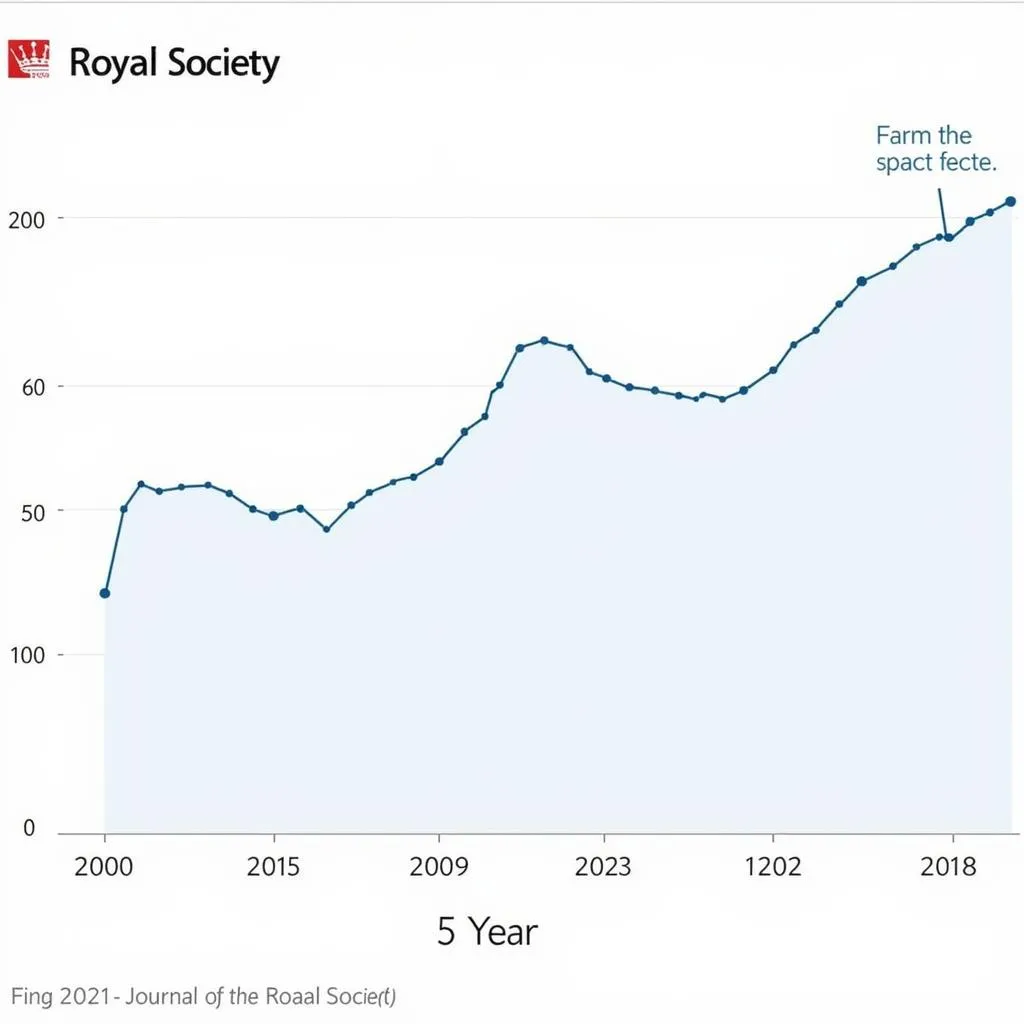The “Journal Of The Royal Society Interface Impact Factor” is a metric that reflects the average number of citations received by articles published in the journal within a specific timeframe. This factor serves as a key indicator of a journal’s prominence and influence within the scientific community, particularly in the field of interdisciplinary science.
What Does the Impact Factor Tell Us?
The impact factor provides valuable insights into the reach and significance of research published in the Journal of the Royal Society Interface. A higher impact factor suggests that articles in the journal are more frequently cited by other researchers, implying greater visibility, relevance, and potential to shape future scientific discourse.
 Journal Impact Factor Graph
Journal Impact Factor Graph
Factors Influencing the Impact Factor
Several factors can influence a journal’s impact factor, including:
- Journal Scope and Quality: Journals with a clear focus on cutting-edge, interdisciplinary research tend to attract high-quality submissions and subsequently garner more citations.
- Editorial Standards: Rigorous peer-review processes and high editorial standards contribute to the publication of impactful and influential research.
- Author Reputation: Articles authored by well-established researchers in their respective fields often receive more attention and citations.
- Accessibility and Dissemination: Open access policies and effective dissemination strategies can enhance the visibility and reach of published research, leading to increased citations.
 Researchers Collaborating on Interdisciplinary Project
Researchers Collaborating on Interdisciplinary Project
Significance for Authors and Researchers
For authors, publishing in a journal with a high impact factor can enhance the visibility and impact of their research. It can lead to greater recognition within the scientific community, increased opportunities for collaboration, and potentially, greater funding prospects.
For researchers, the impact factor serves as a guide when selecting journals for their submissions. A high impact factor can indicate that a journal is a reputable and influential platform for disseminating their findings to a wider audience.
Beyond the Impact Factor: A Holistic Perspective
While the impact factor is a valuable metric, it’s crucial to acknowledge its limitations. It’s essential to consider other factors like the quality of individual articles, the journal’s reputation within the specific field, and the overall research landscape when evaluating a journal’s significance.
 Scientist Reading Research Articles
Scientist Reading Research Articles
The Journal of the Royal Society Interface, with its commitment to publishing high-quality, interdisciplinary research, continues to play a vital role in advancing scientific knowledge. Its impact factor serves as a testament to the journal’s growing influence and its contribution to shaping the future of science.
 using WordPress and
using WordPress and